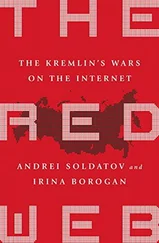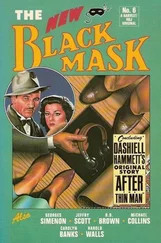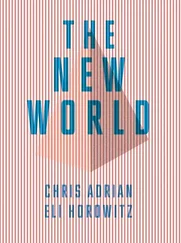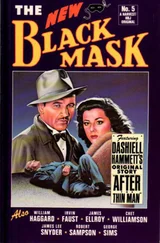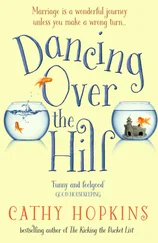But there is another interesting thing here. I already told you in the first session about Schoenberg’s extreme sensitivity to the principle of sequences. On the other hand, of course, he cannot entirely avoid developing ideas via sequences in such a piece and with such material. It is rather fascinating to observe how he helps himself in this situation. What he does, evidently because direct sequencing was already unbearable to him by that time, is to separate two themes by interpolation in such a way that there is an insertion between the two parts of the sequence, a different thematic element, that is also repeated once. So, this is the theme [plays], and now it continues as an insertion [plays], and now the second subject again [plays] and now the first returns [plays], and now the same insertion [plays], and now the second theme again [plays]. And only now, after these interruptions, is the new theme actually sequenced [plays], and suddenly shortened, so here he remains within convention for a moment [plays], and from the second theme [plays]. Now there is an anticipation of a theme that becomes central later on [plays]. So here, this theme that I just touched on, this plays a key role in the second part. But you must distinguish very carefully between the formal sense of themes from the first part that are quoted in the second and themes from the second part that are quoted in the first. Here, this is clearly an anticipation of a later theme that flashes up only briefly now, as it were.
Now something very interesting happens: there is a short section introduced by a relatively new motif. And this is something that I consider very important to an understanding of the form, if we consider the fate of the large forms. When it comes to matters of actual formal construction in Schoenberg’s music, as you know, he was influenced far more by Brahms than by Wagner. Now in Brahms, especially the mature works, one finds a certain aversion to the adagio. There are only very few adagio movements in late Brahms that are truly elaborated in the fullest sense, such as the slow movement, the andante movement of the Fourth Symphony. In general, the adagios in late Brahms are extremely brief and approach the quality of songs. And Schoenberg also had some of this great sensitivity to the adagio. I would not go so far as to claim that one cannot really write adagio movements any more, because I have become too well acquainted with Bruckner – through Anton von Webern – to stand by such an assertion. But certainly the matter of the adagio as such is a form of threshold for composers. There is a kind of shame about the adagio, and you will find that the great adagio movements in late Schoenberg, which do actually exist, are rarely symphonic adagios in the manner of Bruckner or Beethoven – think of the prototype of the adagio on a grand scale, namely the slow movement of the Hammerklavier Sonata or the slow movement of the first op. 59 quartet. One hardly finds such movements, because even the great slow movements in Schoenberg’s mature works, such as the middle movement of the Violin Concerto or the slow movement from the Third String Quartet, are sets of variations rather than symphonically through-composed adagios, and the slow movement of the Fourth String Quartet is a double pairing of recitative and song – I am simply telling you this as a curiosity, though it does not really relate to the subject of this lecture. The form of the slow movement of the Fourth String Quartet is an almost exact replica, or reinterpretation, of the last movement from the F sharp minor quartet, which consists of such a recitative-like part followed by a more densely crafted Abgesang , and the two parts are then repeated once more, which is likewise the case in the Fourth String Quartet. I am only telling you this to show you that Schoenberg had a peculiar reluctance towards the adagio. This reluctance is evident in the great chamber works of the earlier period in the fact that the main theme of the adagio, the relatively elaborated adagio in the First String Quartet, is drawn entirely into the finale, or rather the reprise, which is at once the finale, turning it into the exposition of a final theme, if you will, and despite its length is not really an independent adagio. And of course the Chamber Symphony, Chamber Symphony No. 1, is the clearest example of this, firstly because the adagio is very brief, and then its second theme is already treated as a transition to the reprise, where it now returns almost imperceptibly from this transition. Now, this idea of a shortened and hinted adagio, which is evidently very deeply connected to Schoenberg’s formal impulse, you find that here too. Because after the passage I just touched on, this anticipatory passage, you now have a short section that introduces a new theme, but very briefly [plays]. Incidentally, both the key and the writing are very reminiscent of the adagio section from the First String Quartet. Now, this theme that appears here [plays], which could be heard as a consolatory, comforting theme, is never really treated; it is exterritorial. That is, it is something that suddenly appears as an episode without being thrown into the leitmotif machine and processed. And I would say that precisely something like this, where such an idea is placed there and stands by itself, without everything needing to have some consequences – therein lies Schoenberg’s genius. Once, in better times, Brecht said that, just because someone says ‘A’, they will not necessarily say ‘B’. 2There is something of that also in Schoenberg, who always held on to this freedom despite his consistent rigour towards himself. But – and note, once again, the incredibly refined sense of form that expresses itself in such cases – he would not have included a long, elaborated movement here without any connections to the elements preceding and following it; instead, the thematic shape enters with this exceptional intervening character and is immediately connected to other themes. This theme, for example [plays], which is the ending of the theme I played you [plays]. And then he comes back to the quintuplet motif [plays]; this is the same one where I showed you that it appears as an alternative to the sequence, so that the sequence, when it does ultimately appear, does not become too boring. So it is hinted at, one might say, through this aspect of consolation, of not getting out of the thematic machine, but then he immediately restores this organic relationship to the whole. And the entire episode is very short. Actually, I believe there is a model for this in Wagner, who clearly grew tired of the world of leitmotifs at times, and who came up with this wonderful melody at the end of Act 3, scene 1, which is the beginning of the quintet but also – and it is much the same if you look at the quintet from Act 3 … [interjection from the auditorium] Pardon me? What did I say? No, Die Meistersinger , of course. I am sorry, please excuse me. If you look at the continuation, it is very similar to this interpolated adagio section in the Schoenberg, as the continuation immediately falls back on the song of praise, and this very new idea flashes up only for an instant [plays], and then things immediately go somewhere else. Now, this section is followed by the long development, or at least what I would consider the development section. I will not analyse this development in detail for you, but I will show you something else that might just interest you a little, because here too one can find something very close to a note row.
Before I address that, let me just point out one small matter, namely the relationship between row and exposition. Some of you are presumably in Leibowitz’s 3course, and he was developing the thought, I believe it was the day before yesterday, that – I said ‘between row and exposition’, that was nonsense, I meant development and exposition – some of you will perhaps have heard him explaining that the development is, in a certain sense, a second exposition. Now, that also applies to the development section here, in so far as it uses key thematic elements from the first exposition, but in a different order – partly in a different order, at least, in reverse order. This is the first theme in the development [plays op. 4]. And this theme belongs to the complex of the originally duet-form second subject I showed you before, which first appears in the exposition on page 7 – that’s this complex [plays]. So then this complex returns in the first development section [plays] and is then sequenced like this, and this is followed by a sort of development of the triplet motif [Adorno corrects himself], the quintuplet motif [plays], and only in a later phase does this previously anticipated motif from the second part appear, which, if you wanted, you might consider a sonata-like codetta. That appears here [plays], and only at the very end of this development does the actual main theme return [plays]. And now we have the cadence again [plays]. So here, in the development, we find the order of thematic components from the exposition more or less exactly reversed, but those components themselves all return. So one might say that the development has already become a sort of reversed reprise. In a very free and variational sense, of course, for it goes without saying that the thematic elements become far more compressed in such a development-like section, and that there is above all a far more combinatorial approach than was possible at the beginning.
Читать дальше

